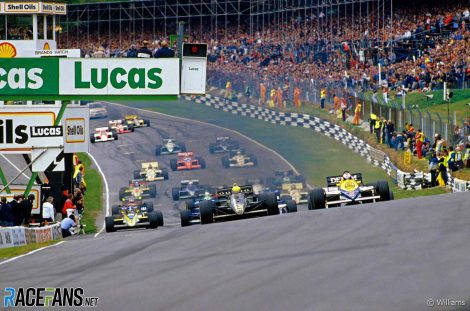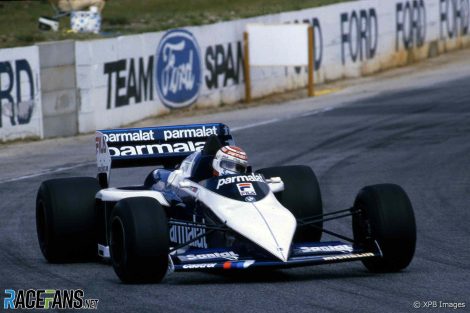Haas put a few noses out of joint with their unconventional strategy in last weekend’s Saudi Arabian Grand Prix.
The team sacrificed Kevin Magnussen’s race in order to help Nico Hulkenberg score a single point.
Formula 1 is all about going as fast as possible, but in unusual circumstances teams and drivers can find benefits in slowing down a little, a lot – or even stopping entirely. Here are 10 other times that happened and the reasons why.
Mission accomplished
Nelson Piquet, 1983 South African Grand Prix, Kyalami
By 1983, turbo-powered cars had taken over Formula 1 but none had lasted long enough, often enough, to power a driver to the world championship. But that was bound to change come the season finale in Kyalami, where three different turbo-powered drivers had a shot at the title: Outsider Rene Arnoux (Ferrari), points leader Alain Prost (Renault) and Nelson Piquet (Brabham-BMW).
From the front row, Piquet scorched off into the lead. He was two seconds clear by the end of lap one and 10 seconds to the good nine laps later. By that stage Arnoux’s engine had already cried enough and only Prost could deny Piquet the title.
Then on lap 36, approaching half-distance, Prost stopped in the pits, his turbo blown. Piquet learned through his pit board, and realised the only remaining threat to his title was a car problem. Quickly, he turned the boost down and began coasting home.
His lead stood at 8.6 seconds over team mate Riccardo Patrese on lap 37. By lap 61 he’d backed off enough for Patrese to take the lead, and 11 laps later Niki Lauda’s McLaren relieved him of second place – though soon after he became the day’s 13th retirement.
Andrea de Cesaris took second place from Piquet on lap 74, but with Derek Warwick a lap down in fourth his position, and his title, was secure. But despite the championship win, team principal Bernie Ecclestone did not appreciate the lost one-two.
Advert | Become a RaceFans supporter and
Vengeance
Keke Rosberg, 1985 European Grand Prix, Brands Hatch

Keke Rosberg saw red when Ayrton Senna slammed the door in his face as the pair disputed the lead at Clearways on lap seven. While Senna pressed on in the lead, Rosberg spun, his Williams was hit by Piquet, and he limped into the pits with a left-rear puncture.
As Rosberg emerged, Senna appeared in his mirrors, the second Williams of Nigel Mansell in…
Click Here to Read the Full Original Article at RaceFans…

